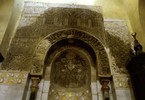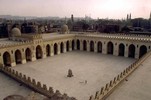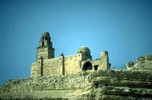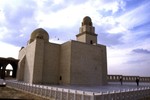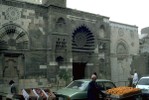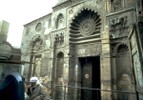Previous Lecture | Next Lecture
Concepts
Major Sects of Islam
- The Sunnis: from sunna (tradition or custom), those who adhere to the standard practice (understod to be of the Prophet). Sunnis are the majority of Muslims and follow four schools of jurisprudence: the Shafi'i, Hanafi, Maliki, and Hanbali. They accept the legitimacy of both the Umayyads and Abbasids.
-
The Shiites: From shia (supporters), those who recognized 'Ali as the only legitimate imam (political and religious leader) after the Prophet, and rejected most other caliphs, especially the Umayyads. They developed into several sects which differed in the number of imams they recognized. Most important are:
- The Twelvers Imamis: The majority of Shiites, they recognize twelve descendants of 'Ali. Most of Iran became Shiite in the sixteenth century under the Safavids.
-
The Ismailis: Recognize the first six imams, but differ with the Twelvers about the seventh, Ismail, hence their name.
- The Fatimids: An Ismaili dynasty whose founder claimed descent from Fatima, the daughter of the Prophet and wife of 'Ali, and established a counter-caliphate in Ifriqiya (909-71), which was later expanded to include Egypt and southern Syria (969-1171).
Al-Qahira (Cairo): The new capital city of Egypt established by the Fatimids upon their conquest of the country in 969 north of Fustat, the old capital.
Characteristics of Fatimid Mosque Architecture
- The use of projected portals and domes over mihrabs for ceremonial purposes.
- The use of keel-shaped arches in porticoes and arcades.
- The profusion of fine stucco decoration, especially in mihrabs and qibla walls.
Monuments
Al-Azhar Mosque: (969-72) The royal congregational mosque of al-Qahira, founded in 969 and dedicated in 972, it evolved to become the religious center of Egypt and the most celebrated theological college in the Islamic world.
Al-Hakim Mosque: Built between 990 and 1003 outside the walls of al-Qahira, and named after al-Hakim, the third caliph in Egypt.
The Mashhad al-Juyyushi: Built by Badr al-Jamali, the commander of the armies (amir al-juyush, hence the name) in 1085 and identified as a mashhad (shrine).
Al-Aqmar Mosque: A small masjid built in 1125 north of the caliphal palace.


